Papilloma is a benign neoplasm localized on the skin and mucous membranes. They arise from human papillomavirus (HPV) activation and are available in a variety of forms. Some of them are harmless and only cause cosmetic defects, others are potentially dangerous and can develop into cancerous tumors.
The original mechanism of papilloma
The appearance of a particular type of neoplasm depends on the type of virus the person is attacking. Distinguish between low oncogenic strains, where their growth does not pose a significant danger to the carrier, and is highly oncogenic. Neoplasms appear to be caused by papillomavirus, an action that causes excessive cell division, resulting in its gradual growth.
"Safe" papillomas usually appear on the skin, while the most alarming is localized on the mucous membranes.Neoplasms like these usually cause a very oncogenic type of virus. For women, the appearance of growths in the genital area can be dangerous for cervical cancer.
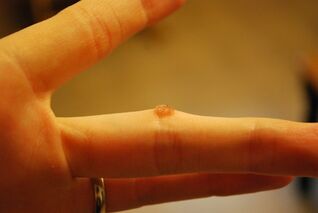
Normal papilloma (warts)
One of the most common manifestations of HPV, known as "warts". Their appearance is usually due to the action of low oncogenic strains, transmitted through contact and daily life.
Warts usually occur on the fingers, palms, soles of the feet, or feet.
Externally, it looks like a small papillary neoplasm with a homogeneous structure. Papillomas are usually soft to the touch, at the onset of the disease, the pigmentation is weak: the color does not differ from the color of the body.
However, as the disease progresses, its growth increases and begins to darken. Sometimes hair can grow in the middle of warts.
Papilloma Filiform
This type of papilloma gets its name because of the small foot, which is a neoplasm that protrudes above the surface of the skin. Its growth is distinguished by its elongated shape and has a size of about 5 mm. Often, papillomas are localized in places where the skin is thinner:
- dada;
- neck;
- eyelids;
- crotch area;
- armpits.
filiform papilloma is more typical in patients over 45 years of age, but sometimes it occurs in young people.Growth tends to increase as the disease progresses.Gradually, they begin to stretch more.
The papilloma head is yellow or pink, no significant pigmentation. Keratinization neoplasms are rarely found. With trauma, pain is not observed. A few others may appear at the site of the damaged papilloma electrorm. If growth is on the face, it is recommended to stop using a scrub or comb. In the armpit area, papillomas are also often injured by razors, which can adversely affect the health of the patient.
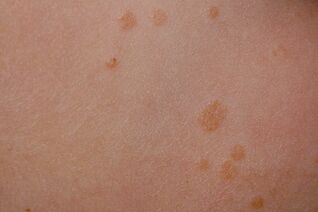
Papilloma rata
This form of papilloma is also localized on the skin and resembles small plaques. Flat papillomas have a yellowish color, measuring no more than 1-2 mm. In structure, the growth is dense, the roots are located under the skin. Because of this, at the time of damage or stress, pain may occur. Also, these structural features sometimes leave scars after removal of the accumulation.
Special symptoms that accompany the appearance of flat papilloma:
- redness of the skin around growth;
- itching;
- pain when touched;
- inflammation.
Usually, growths appear on the face or hands, but sometimes they occur on the genitals. In women, they are usually located in the labia majora, in men, in the scrotum or anus. Flat papillomas increase rapidly and bleed upon trauma.
Genital warts
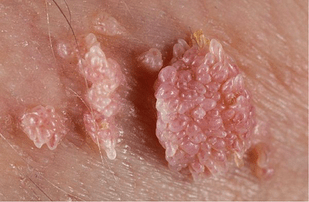
This growth is usually located in the groin or mucous membranes. It is caused by HPV tension that occurs during unprotected sex. Often they attack:
- vagina;
- vulva;
- cervix;
- anal area;
- scrotum;
- penis.
The growth is similar to the thin, small papillae - 2-3 mm. Usually the virus is not limited to the appearance of a single neoplasm. Warts are characterized by the appearance of several growths at once, gradually merging with each other. Neoplasms grow rapidly in size and grow. At this time, the shape begins to resemble cauliflower inflorescences.
Genital warts are considered one of the most dangerous types of papilloma.In addition to the fact that it is these growths that can degenerate into malignant tumors, infections often accompany them. Also, neoplasms tend to recur after removal, so patients should undergo regular checkups to control HPV concentrations.
In rare cases, condyloma can form on internal organs such as the abdominal wall or rectum. In this case, it is impossible to diagnose the presence of neoplasms on their own. Lack of certain symptoms can be a problem in the diagnosis and treatment of this disease.
Lewandowski-Lutz Papandoma
A relatively rare type of papilloma. Often it occurs on the feet and on the hands. A special feature of the growth is the uneven edges. They are usually brown, but sometimes they can have a dark red color. This form of the disease can also cause neoplasm degeneration to become malignant, so patients should see a doctor as soon as possible.
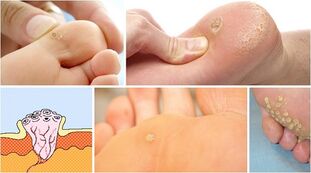
Plantar Warts
This growth is more common in children and adolescents, rarely in adulthood. It is considered a normal reaction of the body to a decrease in immunity, accompanied by trauma to the soles of the feet due to uncomfortable shoes. Unlike regular clots, the warts are rough and have serrated edges. Also, the skin pattern is clearly visible on the callus.
Plantar warts are characterized by small spots on the surface of the skin and large bases that grow subcutaneously. Usually completely keratinized due to continuous abrasion during walking. Over time, growth increases, squeezing or touching them causing discomfort and pain.
Due to its structural nature, warts are difficult to remove from the skin, as most are located inside. Therefore, after removal, it is often necessary to apply sutures, and scars may remain in place of the procedure.
Adolescent papilloma
A large number of infections occur in young children under the age of 5, as infections usually occur during childbirth. If a pregnant woman is a carrier of the papillomavirus virus and has genital warts in the vaginal area, the baby is more likely to be infected.
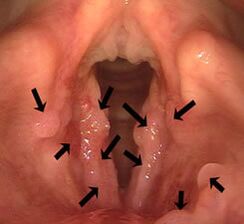
Adolescent papilloma found on the skin is harmless. However, they can also be localized in the larynx, which can cause the baby to have difficulty breathing. In the early stages, no signs of disease were observed. After a while, the following symptoms appear:
- a lump in the throat;
- difficulty swallowing saliva or food;
- respiratory dysfunction.
In older children, voice changes may occur, which is a hallmark of ligament damage. Papillomas can grow and provoke an asthma attack, which can one day result in complete cessation of breathing.
Papillomatosis
Papillomatosis is a condition in which the number of neoplasms increases dramatically and spreads throughout the body. It is also called the common papillomavirus. Usually a large accumulation of papilloma occurs on the hands, face, in the genital area. Papillomatosis, which occurs in the mucous membranes or on internal organs, is potentially harmful to humans.
Often, papillomatosis is mentioned when juvenile papilloma appears in the larynx area. They are the ones who tend to grow excessively.
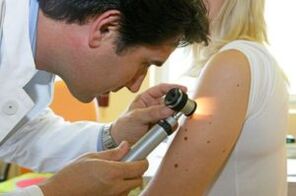
Conclusion
Although there are relatively safe forms of papilloma, each requires periodic examination by a specialist. This will help control its growth and immediately eliminate it if necessary. In addition, it is important to remember that the presence of neoplasms is an indication of infection with papillomavirus, which also requires timely therapy.























